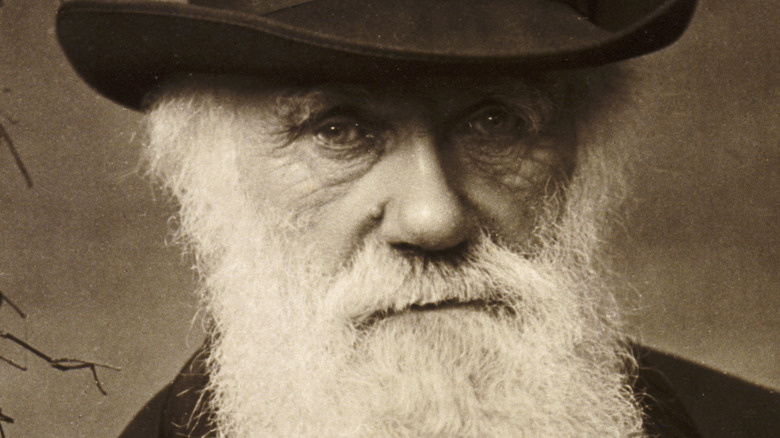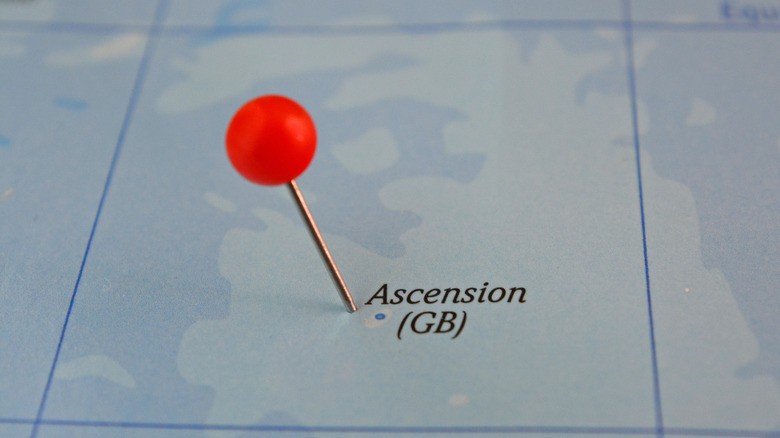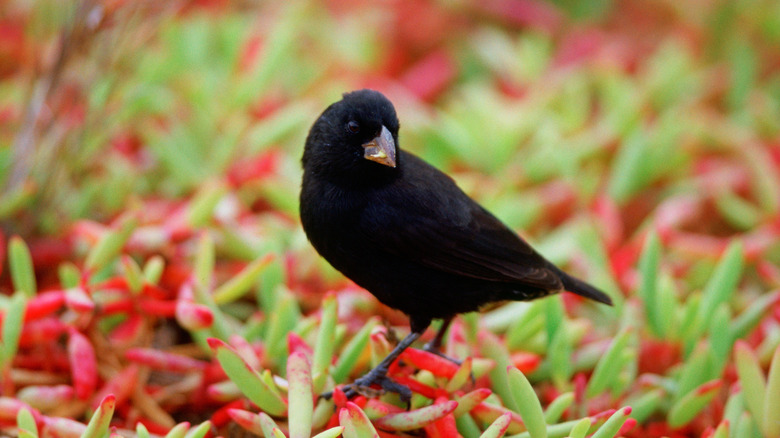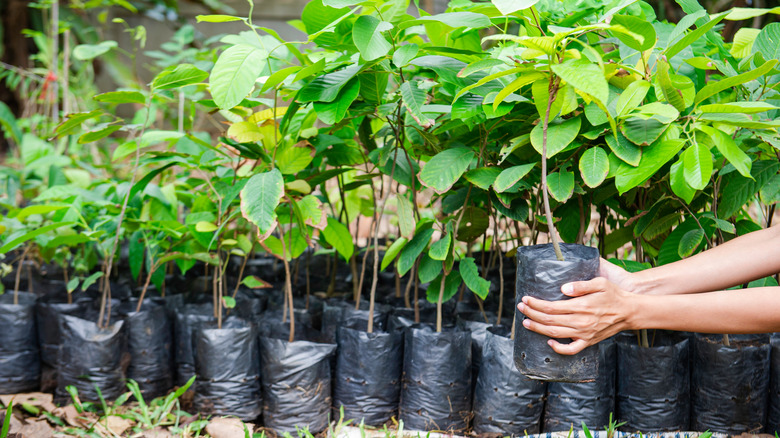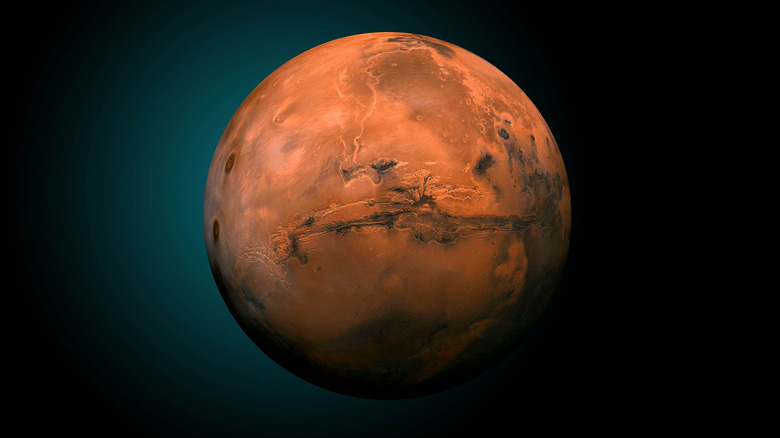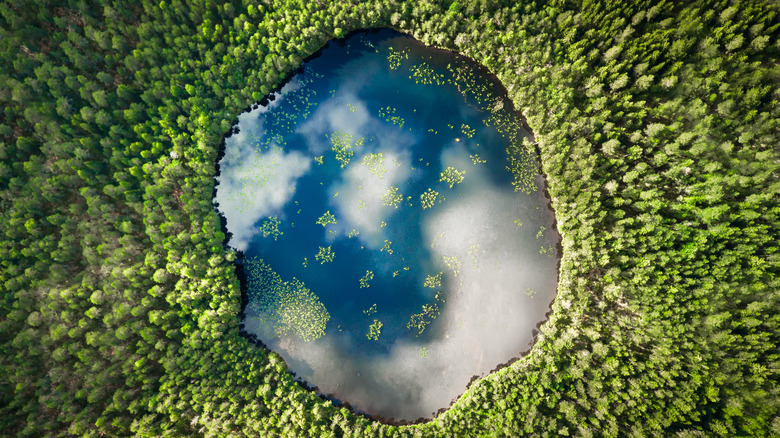How Charles Darwin Could Help Shape The Future Of Mars
The famous naturalist Charles Darwin, whose 1859 book "On the Origin of Species" introduced the theory of natural selection, came up with many of his evolutionary ideas on a trip to the Galapagos Islands. Setting off on the HMS Beagle, Darwin found that a certain species of bird existed across all of the islands but was subtly different on each one. This led him to the idea that the finches, and more broadly all living things, could adapt to their environment over time — or evolve. This theory was groundbreaking, as at the time, most believed that all life was created as it was at the beginning of time, rather than adapting over time from small molecules to complex molecules, to apes, to cavemen, to talking, conscious beings (via The Conversation).
Some scientists have likened Darwin's journey to current explorations of Mars because what existed outside of the European continent was widely unknown to most at the time (per The Beagle Project). In fact, a crater on the south face of Mars was named after Darwin, and the European Space Agency named one of their Mars exploration spaceships — the Beagle 2 — after the HMS Beagle. But Darwin's influence on space travel goes far beyond a couple of things named in his honor.
Playing God
In addition to the Galapagos Islands, Charles Darwin visited other parts of South America, including a small, tropical, volcanic island called Ascension, according to BBC News. The island's volcanoes are a result of its location in a hot spot in the mid-Atlantic ridge, a series of mostly underwater ridges that comprises the "most extensive chain of mountains on Earth," according to the National Oceanic and Atmospheric Administration. Because of this, Ascension has active volcanoes and, upon Darwin's visit, was mostly a dark, ashy place.
Although Darwin wasn't colonizing people, he rode on England's ships, manipulating nature in a way that strikingly resembles English colonialism, and he has been criticized for holding racist views (per Smithsonian Magazine). Darwin wanted to "play God" and transform the island into a lush, green oasis he would call "little England," per Popular Science. That was in part because of his scientific gumption, but also because the island was taken over by the British Navy as an outpost where they could watch over neighboring islands controlled by Napoleon. Because of this second purpose, the Brits needed a reliable water source, which they weren't getting from the island's natural dry landscape.
A Garden of Eden
Charles Darwin set out to change the island's water supply by importing trees from the Kew Gardens, according to BBC News. As it stood, any rainwater that did fall on the island would quickly evaporate in the heat without green space to soak it up. With the planting of these trees, the land was able to hold more water naturally, and the island's ashy dirt was transformed into nutrient-rich soil that allowed other greenery to flourish. More and more shipments came in from Europe, South Africa, and Argentina, and within 20 years, the island was home to eucalyptus, bamboo, and banana trees that were naturally growing (per BBC News). This led to a hodgepodge natural landscape, where trees and plants native to different parts of the world neighbored each other.
Ironically, Darwin's theory of evolution disproved the religious beliefs of many — that human beings were created from God's likeness in Adam and Eve. But here he was on a remote island, playing God and creating another sort of Garden of Eden.
Helping life 'find its own way'
To this day, scientists are amazed by the experiment, as natural transformations of this degree typically take hundreds of thousands of years, if not millions, to show meaningful results. But Darwin somehow managed to do it within a few decades, according to BBC News. Now, scientists are looking to this experiment as an example of how they might help make Mars inhabitable for human life in a relatively short time period.
These days, many eco-friendly ideas involve a huge allotment of resources and highly developed technology. Think Elon Musk's Tesla electric cars or the transition to solar and wind energy. But there has also been a strong push towards more "return to nature" approaches, like building coral reefs to protect against beach erosion or replanting trees to combat deforestation. Although you could argue that some of these approaches are still heavily human-handed, some scientists see Darwin's transformation of Ascension as one of the first examples of this more natural approach — or working with life so it can "find its own way," as the ecologist Dave Wilkinson told BBC News.
Martian humans
Much like many of the islands that Charles Darwin explored, Mars would be an isolated place for a new generation of humans to develop. Because of the natural landscape there — where gravity and sunlight are less intense, and the radiation from the sun is more intense — scientists say human beings might evolve into a new form of humans, much like Darwin's finches in the Galapagos evolved independently of one another (via NBC News).
Speculatively, that might mean that these next-generation Martians have weaker skeletons because of the weaker gravity and bigger eyes to see better in a more cloudy and less sunny landscape. However, this may take thousands of years, at least. That is if the human race successfully finds a means to relocate to Mars and survive its less hospitable environment long enough to reproduce in subsequent generations in the first place.
A little warm pond
Another Charles Darwin theory that has recently been revisited as scientists attempt to understand how life on Mars might work is his "little warm pond" hypothesis. While many scientists believe life originally developed in volcanic ocean ridges underwater, Darwin theorized that life was created in water cycles on land, first producing small molecules like amino acids that went on to evolve into more advanced compounds, per Smithsonian Magazine. If Darwin's little warm pond theory is proven true, it would mean that we would likely have more luck living on Mars because subterranean lakes and other bodies of water have been discovered on the planet (via The Scientist).
On the flip side, life on Mars might be recognizable by the composition of its characteristic reddish rocks. A substance called desert varnish, the clear glassy coating that lines rocks and allowed ancient human beings to draw pictures that have been preserved to this day, piqued the interest of Darwin in his research, and rightly so. Recently, scientists discovered that this desert varnish can trap amino acids and other chemicals over thousands of years, according to Science. This substance is thought to exist on Mars' rocks as well, indicating that the organic compounds that fascinated Darwin and predicted life on Earth could eventually predict life on Mars, too, according to a study in Instruments, Methods, and Missions for Astrobiology VII.
